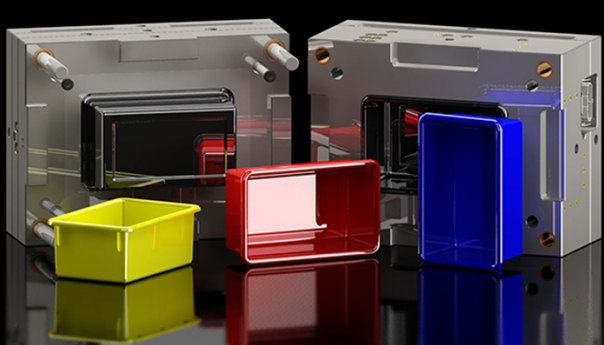Designing a High-Quality Plastic Bakery Crate Mould
Introduction:
The bakery industry heavily relies on durable and efficient storage solutions to ensure the safe transportation and presentation of their products. Plastic bakery crates have emerged as a popular choice due to their lightweight nature, durability, and ease of cleaning. However, the design and quality of the crate mould play a crucial role in determining the final product\’s performance and longevity. This article aims to explore the key considerations and steps involved in designing a high-quality plastic bakery crate mould.

Design Considerations:
1. Functionality: The mould design should prioritize the functionality of the bakery crate. It should accommodate different sizes and shapes of bakery products such as bread, pastries, and cakes. Proper dividers and stacking options should be incorporated to ensure stability during transportation.
2. Material Selection: Choosing the right plastic material is essential to ensure the durability and longevity of the bakery crate. Factors such as impact resistance, heat resistance, and ease of cleaning should be taken into account. Common plastic materials used for bakery crates include polypropylene (PP) and high-density polyethylene (HDPE).
3. Venting and Cooling: Proper venting and cooling channels should be incorporated into the mould design to ensure consistent and efficient cooling of the plastic material. This helps in minimizing warpage and improves the overall quality of the bakery crate.
4. Draft Angles: Incorporating draft angles in the mould design is crucial for easy demoulding of the bakery crate. Draft angles facilitate the smooth release of the plastic product without causing any damage to its shape or surface.
5. Wall Thickness: Determining the appropriate wall thickness is essential to maintain the structural integrity of the bakery crate. The design should ensure that the walls are thick enough to withstand the load during stacking and transportation, but not excessively thick to avoid unnecessary material wastage.
Steps involved in designing a high-quality bakery crate mould:
1. Product Analysis: Conduct a thorough analysis of the desired bakery crate\’s requirements, including dimensions, shape, and functionality. This analysis helps in determining the optimal mould design.
2. CAD Design: Utilize computer-aided design (CAD) software to create a detailed 3D model of the bakery crate mould. Pay attention to details such as wall thickness, draft angles, and cooling channels during the design process.
3. Prototype Development: Create a prototype of the mould using rapid prototyping techniques such as 3D printing. This allows for testing and validation of the design before full-scale production.

4. Tooling: Once the prototype is approved, proceed with the tooling process. This involves manufacturing the mould using high-quality materials and precision machining techniques.
5. Mould Testing: Test the newly manufactured mould using the desired plastic material. This helps in identifying any potential design flaws or issues that need to be addressed before mass production.
6. Production: Once the mould is successfully tested, it is ready for mass production. The bakery crate mould can be used in injection moulding machines to produce high-quality plastic bakery crates efficiently.
Conclusion:
Designing a high-quality plastic bakery crate mould requires careful consideration of various factors such as functionality, material selection, venting, cooling, draft angles, and wall thickness. Following the necessary steps, starting from product analysis to production, ensures the creation of durable and efficient bakery crates. With the right mould design, the bakery industry can benefit from improved storage solutions that enhance product safety and presentation.
Vorherige:Creating High-Quality Plastic Injection Crate Molds for Efficient Storage Solutions
Nächste: Driving Efficiency and Precision: Injection Molding for Automotive Parts
-
Automotive Mold guide: The Key to Efficient and High-Quality Production
2023-5-17
Automotive mold is an essential component in the manufacturing of vehicles. It is a tool that is used to shape and form ...
Einzelheiten anzeigen -
Designing the Perfect Plastic Milk Crate Mould: Expert Tips and Techniques
2023-6-26
Milk crates are an essential tool in the dairy industry. These crates are used to safely transport milk bottles from the...
Einzelheiten anzeigen -
How are precision moulds made?
2024-12-3
In the vast field of manufacturing, precision moulds play a vital role. Not only are they key tools in the production of...
Einzelheiten anzeigen -
2024-11-28
In the vast field of industrial production, moulds play an important role. Among them, secondary moulds, as a special ty...
Einzelheiten anzeigen -
2024-12-14
In today's rapidly developing automotive industry, the design and manufacturing technology of automotive molds is not on...
Einzelheiten anzeigen -
Achieving Precision and Durability with Aerospace Molding Parts
2023-12-7
The aerospace industry is known for its stringent requirements when it comes to precision, durability, and safety. Every...
Einzelheiten anzeigen







